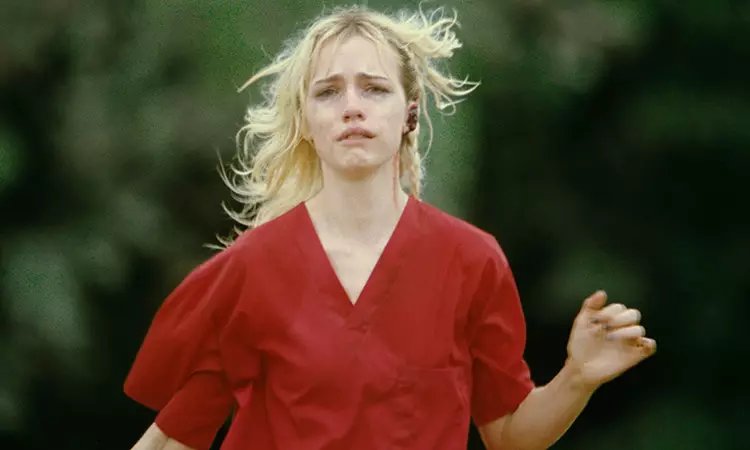In the realm of psychological thrillers and horror films, the expectations of the audience can often serve as a guiding light, framing the viewing experience in familiar patterns of narrative progression. However, “Strange Darling,” directed by JT Mollner, audaciously dismantles these expectations right from its opening scene. The film begins with an unsettling question posed by a woman known only as The Lady (Willa Fitzgerald) to a man identified as The Demon (Kyle Gallner). This simple inquiry, “Are you a serial killer?” serves as both an engaging hook and an omen of the disorientation that follows. By framing its story within an unconventional structure—starting at Chapter Three and shrouding the narrative in a veil of confusion—Mollner invites the audience into a labyrinthine world where time is manipulated and the concept of victimhood is thoroughly interrogated.
The choice to commence the film with an intense chase scene, devoid of context and linear progression, serves to immerse viewers in a state of immediate tension. Here, we find The Lady fleeing through a wooded landscape, pursued by The Demon, who embodies the archetypal slasher villain. The film’s refusal to detail the backstory or motivations behind the characters lends a sense of urgency to the narrative. This disorientation—coupled with The Demon’s seemingly disproportionate power demonstrated through his ability to fire a rifle with deadly precision—challenges the audience’s perception of who is in control.
While this cat-and-mouse dynamic may evoke familiarity through its homage to classic horror tropes, “Strange Darling” subversively layers in themes that complicate the straightforward dichotomy of predator and prey. Such a choice begs critical examination, forcing the audience to reassess their alignment with the characters and their respective narratives.
Mollner’s film is not easily categorized; its fluid transitions from thriller to dark romance and back again advocate for a deeper commentary on the human condition and moral ambiguity. After fleeing from The Demon, The Lady stumbles upon a farmhouse, where her desperate plight intersects with the mundane discussions about local folklore—specifically, Bigfoot. This moment acts as a jarring juxtaposition, contrasting the terror that has consumed The Lady with a seemingly innocuous community chatter.
The use of offbeat humor in such a tense context invites viewers to reconsider their emotional engagement—dancing on the precipice between fear and absurdity. It is the unpredictable nature of the narrative that exemplifies its refusal to be boxed into any one genre, making the audience question the very definitions of safety and danger. Will The Lady find refuge among the quirky inhabitants of the farmhouse, or will her fate be sealed by the chaos that the Demon brings with him?
As the film unfolds, it embarks on a profound exploration of power dynamics, particularly those that flirt with themes of consent and violation. The notion that “no” can sometimes mean “yes” and the blurry lines between victim and aggressor are critically examined. “Strange Darling” takes bold strides toward unraveling gender norms that dominate both horror narratives and societal expectations at large. The characters are painted with ambiguity: The Lady embodies both vulnerability and an unexpected resourcefulness that can flip the narrative on its head, while The Demon is trapped in his own chaotic struggle, showcasing elements of victimhood in a predator-shaped shell.
By incorporating elements of eroticism intertwined with violence, the film challenges viewers to confront their discomfort and re-evaluate their preconceived notions of attraction and danger. The spaces between desire and fear are blurred, creating tension that resonates deeply, igniting discussions around consent and agency.
Ultimately, “Strange Darling” presents not just a tale of survival but a multifaceted exploration of human nature and societal constructs. The film is bold in its execution, with Mollner weaving together disparate threads of genre, character, and thematic complexity to create a rich tapestry that defies easy interpretation. As the pieces of the narrative finally align, viewers are left with a haunting reflection of the instinctual depths to which individuals may be driven when tossed into the chaos of survival, where every character is navigating their own version of desperation.
Thus, “Strange Darling” triumphs as a thought-provoking endeavor, begging viewers to reconsider the landscapes of horror and romance, ultimately leaving them in a state of contemplative unrest that lingers long after the credits have rolled.

